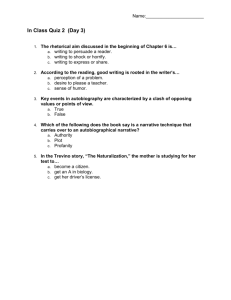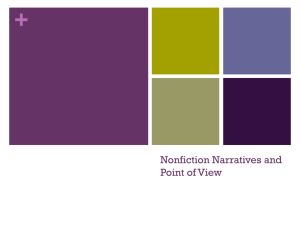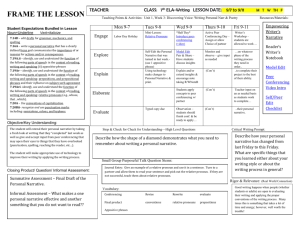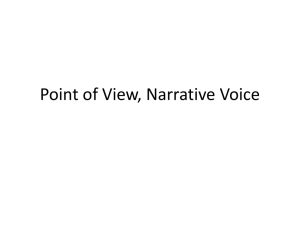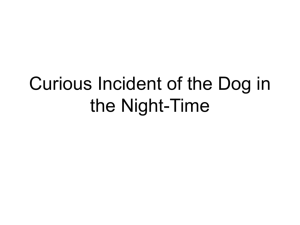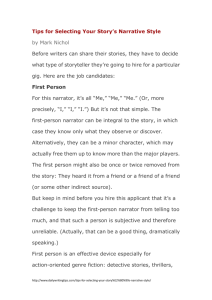Point of View PowerPOint
advertisement
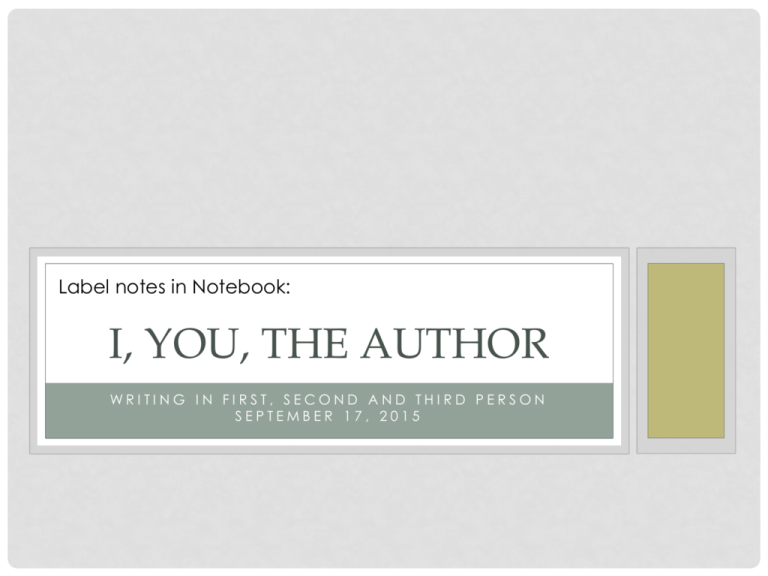
Label notes in Notebook: I, YOU, THE AUTHOR WRITING IN FIRST, SECOND AND THIRD PERSON SEPTEMBER 17, 2015 FIRST PERSON First person, representing the person speaking. Single point of view. Pronouns used: I, we, my, mine, our, ours, me or us. WHEN TO USE “I” A Personal narrative It can be appropriate in a formal academic essay ONLY WHEN giving a specific personal experience as a form of argumentative evidence SECOND PERSON Second person, representing a person or thing spoken to Talk to someone, single point of view. Pronouns used: You, you, you, your, your, your, yours WHEN TO USE “YOU” A letter or email A written speech or public address Directions (pamphlets, etc.) THIRD PERSON Third person, standing for a person or thing spoken of. A neutral point of view, or all knowing point of view. Pronouns used: He, She, They, Him, Hers, It, Its Theirs, Them or His WHEN TO USE THIRD PERSON Formal academic writing, including: Argumentative, Summary/Response, Compare/Contrast, Expository Essays, Descriptive Narrative, Research NARRATIVE WRITING • When writing a narrative, such as your Hero’s Journey, the author has the choice to write in a first person or third person point of view. • If you are choosing to write in the third person point of view, you then have to chose if you want to be omniscient or limited. • Omniscient third person means that the narrator knows all of the characters in the story. • Limited third person means that the narrator adheres closely to one character’s perspective. WALK AWAY Be consistent: When choosing which point of view to write in for a narrative. The most important factor is to be consistent. PICK A POINT OF VIEW • Go to Mrs. Neto’s Website and click on the link PICK A POINT OF VIEW • Find your name and write what point of view you will be writing your narrative in.


